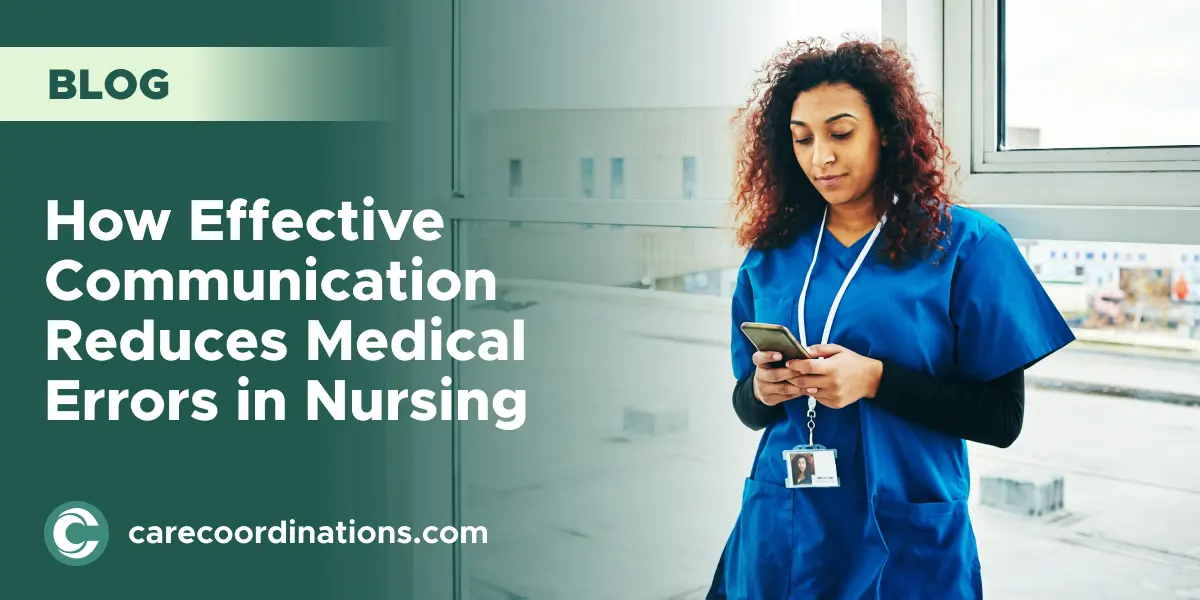Nursing is the backbone of the healthcare system, acting as the primary point of contact between patients and the medical system. Effective communication within this realm is not just beneficial; it's essential. It ensures the seamless flow of information, minimizes misunderstandings, and fosters a therapeutic environment for patients.
Recent studies reveal that medical errors are the third leading cause of death in the United States, with a significant portion attributed to communication failures. These underscore the urgency of addressing communication gaps in healthcare.
Enhancing communication in nursing is paramount for mitigating medical errors, safeguarding patient health, and elevating the quality of care. This article delves into the significance of adept communication, explores barriers, and proposes strategies for improvement.
Understanding Medical Errors in Nursing
Medical errors in nursing, which range from medication mishaps to misinterpretation of orders and flawed patient handoffs, often stem from communication gaps where vital information is lost, miscommunicated, or overlooked. Addressing these medical errors is paramount for ensuring patient safety and maintaining the integrity of healthcare systems globally. Effective communication is a crucial bridge, connecting disparate elements of patient care into a cohesive and safe treatment plan.
The Significance of Addressing Medical Errors
Addressing medical errors is crucial for patient safety and healthcare trust, as well as reducing unnecessary healthcare costs resulting from preventable complications.
The role of communication in preventing medical errors
Effective communication acts as a preventive measure against medical errors. It ensures that healthcare professionals are fully informed about patient care plans, reducing the risk of oversight and mistakes.
Also Read: The Importance of Effective Communication in Nursing: Why It Matters
Barriers to Effective Communication in Nursing
Several barriers hinder effective communication in nursing, including hierarchical structures that may intimidate junior staff from speaking up, language and cultural differences that complicate understanding, and the sheer workload and environmental stress that cloud clear thinking. Furthermore, the advent of technology, while beneficial, has introduced challenges such as information overload and depersonalization of patient care.
• Hierarchical Structures
Hierarchical dynamics can intimidate junior staff or students, deterring them from speaking up about uncertainties or observations that could prevent errors.
• Language and Cultural Differences
Diverse linguistic backgrounds and cultural nuances can complicate understanding, leading to misinterpretation and mistakes.
• Workload and Environmental Stress
High-stress environments and excessive workloads can diminish communication quality, as healthcare professionals may rush interactions or overlook details.
• Technological Barriers
While technology aims to streamline communication, its complexity and the volume of information can sometimes overwhelm rather than aid.
Strategies for Enhancing Communication in Nursing
Several strategies can be employed to combat these barriers:
• Standardized Communication Protocols:
Implementing clear, standardized communication protocols like SBAR (Situation, Background, Assessment, Recommendation) ensures that all team members are on the same page.
• Promoting a culture of Open Communication:
Cultivating an environment where questions are encouraged and errors are seen as learning opportunities rather than grounds for punishment fosters open communication and continuous improvement.
• Technology Utilization:
Leveraging technology through electronic health records (EHRs) and secure messaging apps can streamline communication and reduce manual data entry or miscommunication errors.
• Training and Education:
Ongoing training programs, including communication skills workshops and simulation-based exercises, equip nursing staff with communication tools.
Implementing Change in Healthcare Settings
For effective communication to become the norm, healthcare leaders must actively foster an environment that encourages open dialogue and continuous learning. Nurses, on their part, should advocate for transparent communication practices and engage in training and education to enhance their skills. While challenges such as resistance to change and resource allocation persist, the benefits of improved communication in nursing far outweigh these obstacles.
• Role of Healthcare Leaders
Leaders must champion effective communication, model best practices, and facilitate the adoption of communication-enhancing technologies and protocols.
• Role of Individual Nurses
Nurses should take proactive steps to hone their communication skills, advocate for clear protocols, and practice transparency and assertiveness in their interactions.
• Challenges and considerations in improving communication in Nursing
Implementing change involves overcoming resistance, allocating resources for training and technology, and continuously evaluating the effectiveness of communication strategies.
Also Read: Transforming Healthcare Delivery: The Power of Care Coordination Software
Transform Nursing Care: Effective Communication to Reduce Medical Errors
This article highlighted the critical role of effective communication in nursing for reducing medical errors, the barriers that impede it, and the strategies to enhance it.
The correlation between effective communication and reduced medical errors in nursing is undeniable. As healthcare systems evolve, the emphasis on clear, concise, and open communication has never been more critical.
By addressing the barriers to effective communication and implementing strategic measures to enhance dialogue and understanding, nursing can significantly reduce medical errors, improving patient safety and healthcare outcomes. It is the collective responsibility of healthcare professionals to commit to these improvements, ensuring that patient care is always at the forefront of nursing practice.


